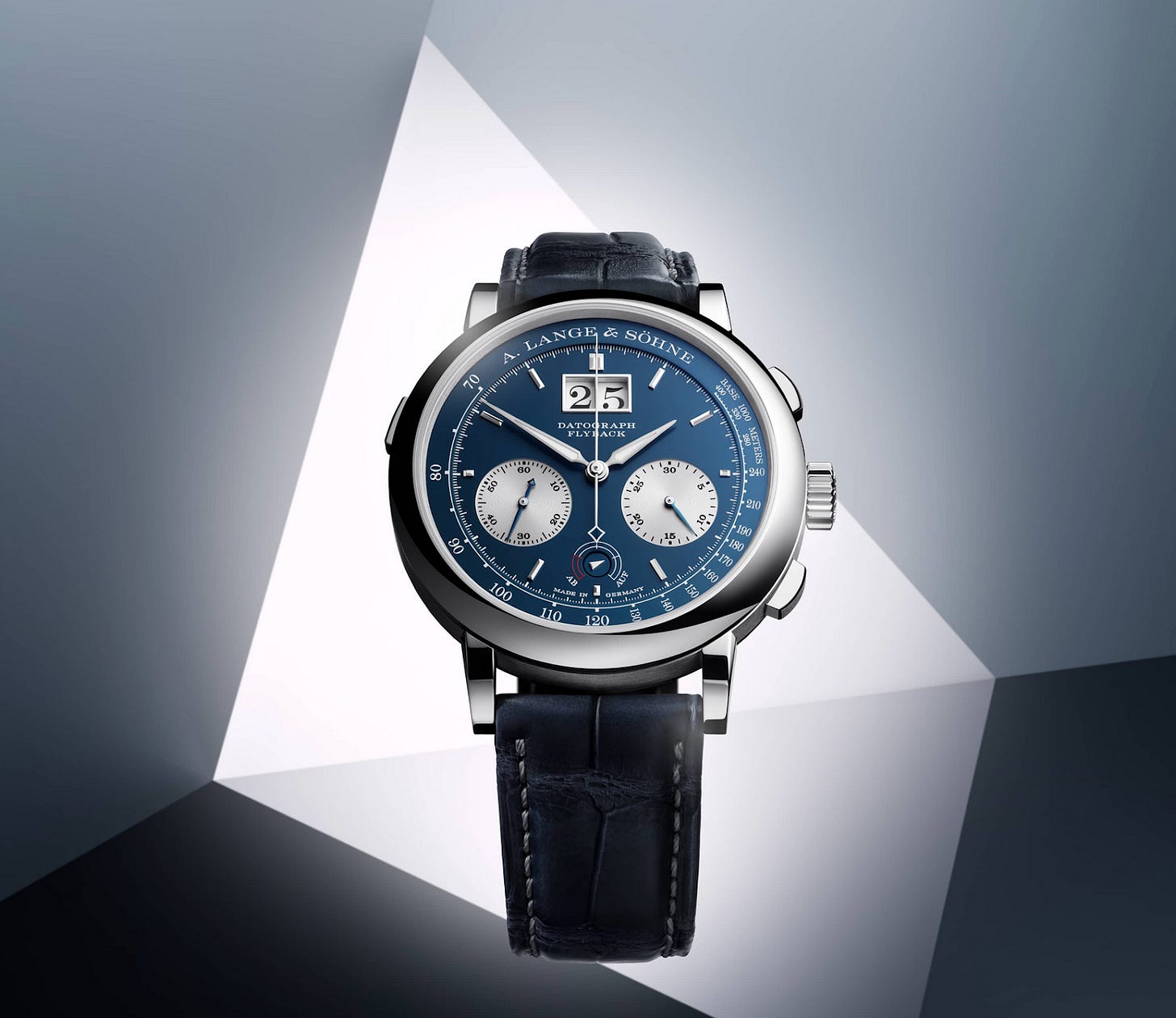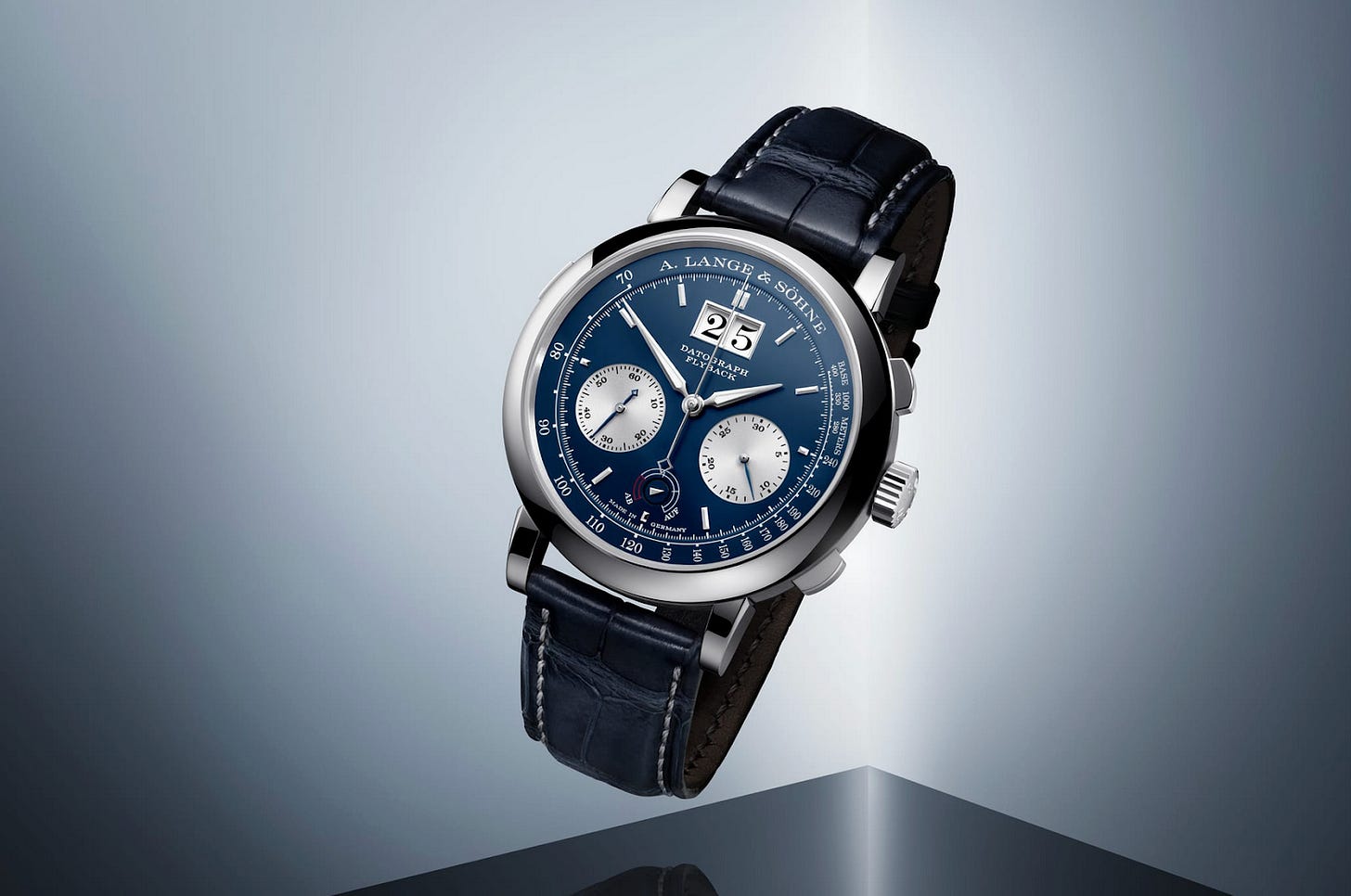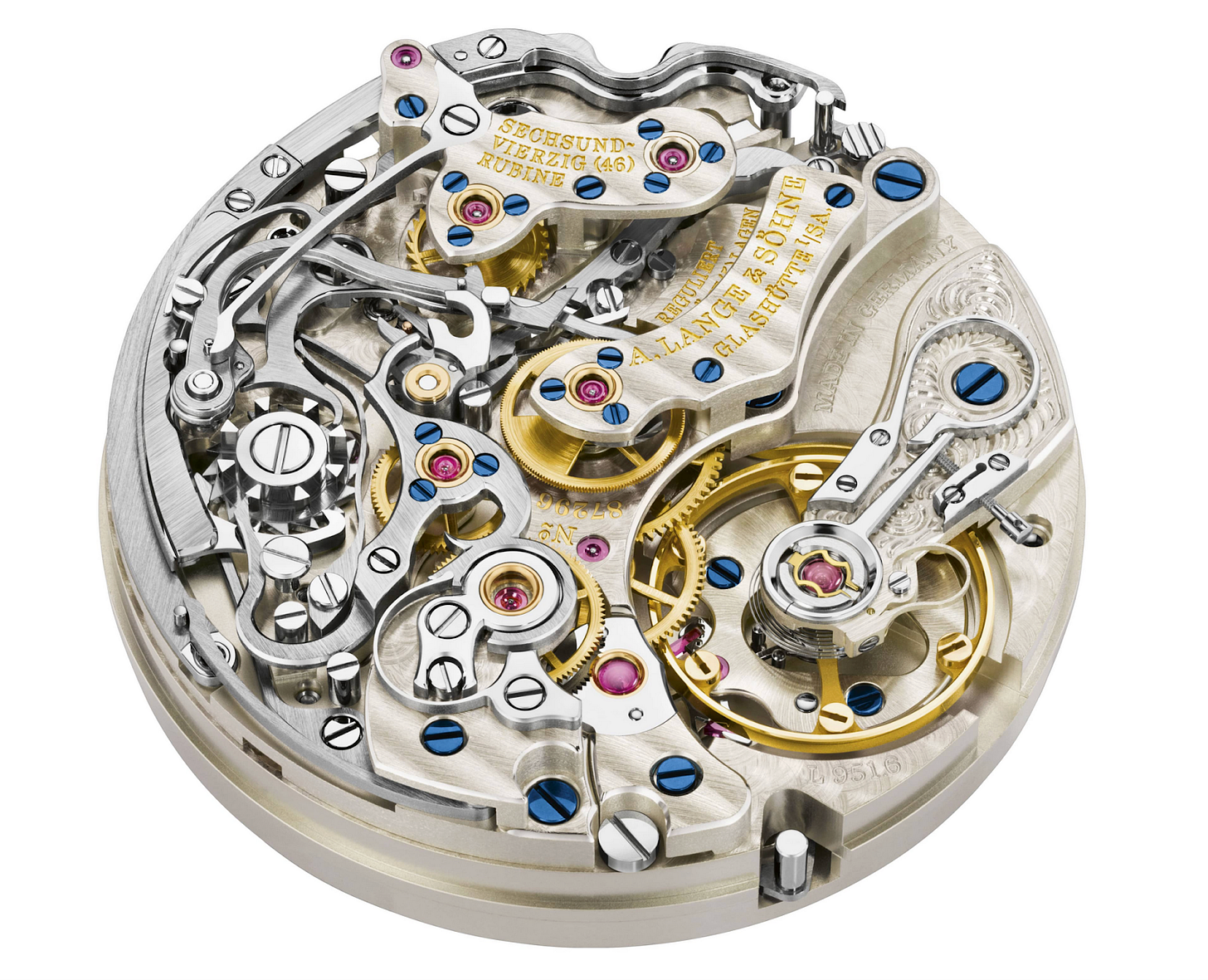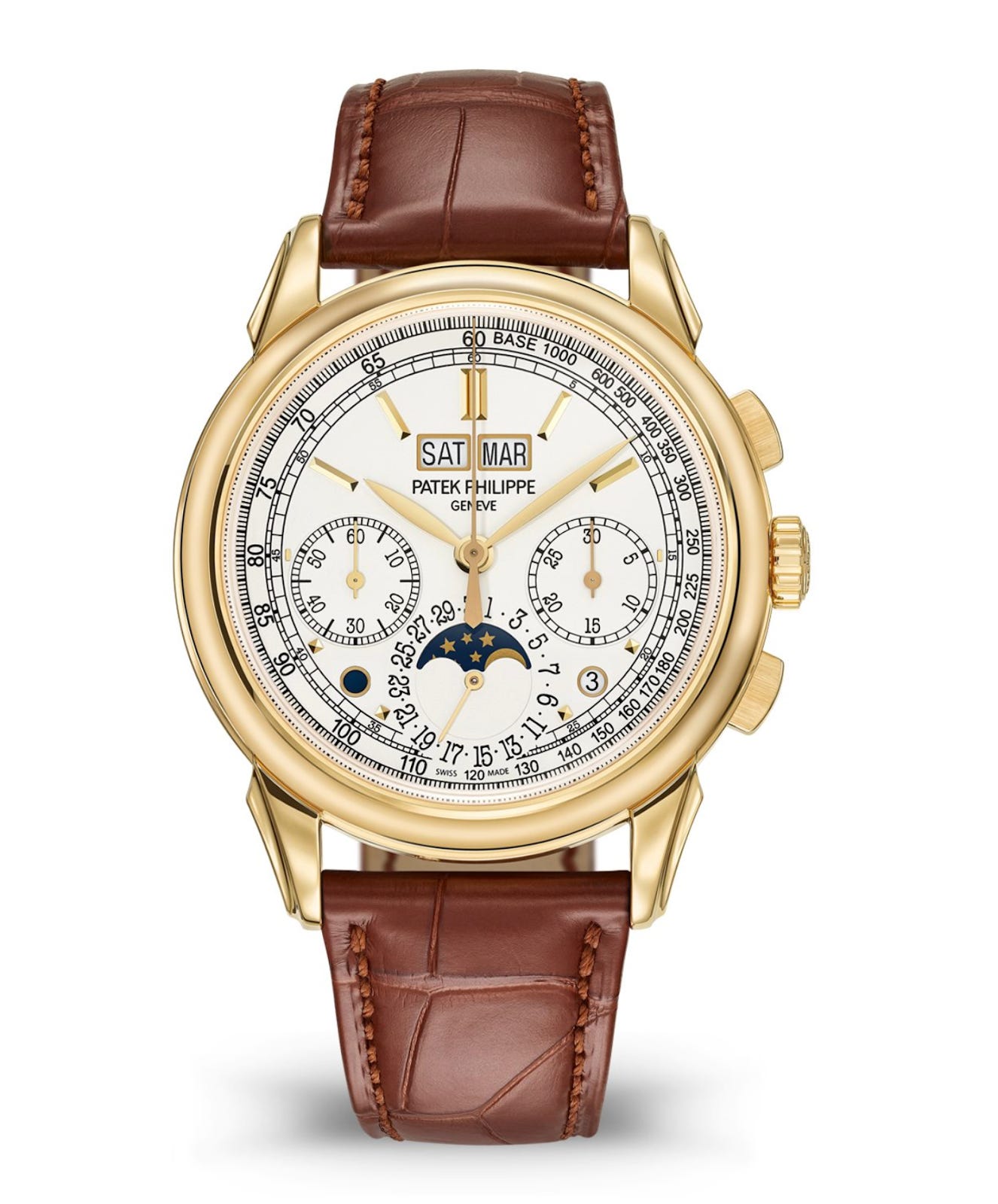The Precision of Intention
“It is not that we have a short time to live, but that we waste much of it.” – Seneca
A hidden gem of chronograph engineering, the precisely jumping minute counter blends mechanical mastery with poetic restraint—revealing time not as a flow, but as a sequence of deliberate moments.
In the early 2000s, during a private showing at the Geneva Salon, a veteran watchmaker from Glashütte quietly lifted the caseback of an A. Lange & Söhne Datograph and pointed to a component so unassuming that most observers missed its significance entirely. "This," he said, indicating a small spring and cam assembly, "is where the chronograph earns its soul." The component? A precisely jumping minute counter mechanism. It was an insider's moment—a subtle nod to an engineering choice that prioritized purity of function over flash. And it signaled to those paying attention that beneath the traditional Teutonic stoicism beat a pulse of mechanical poetry.

In a landscape increasingly dominated by aesthetics and marketing narratives, the precisely jumping minute counter remains one of the most quietly audacious feats of mechanical horology. It is not the kind of complication that draws instant awe like a tourbillon whirling through an open dial, nor does it seduce with the melodic indulgence of a minute repeater. And yet, among horological insiders, it commands a rare kind of reverence. Not for what it shows, but for how it behaves.

The essence of this complication lies in its restraint. Unlike the creeping, almost hesitant motion of conventional minute counters, the precisely jumping counter marks time with the certainty of punctuation. At the 60-second mark, it snaps—definitively, confidently—into the next position. It is not merely a mechanical gesture, but an assertion: time has passed, and it did so with intention.
That simple jump belies an intricate architecture beneath the dial. To store and release the energy required for such an instantaneous movement without compromising amplitude or accuracy demands not only micro-mechanical ingenuity, but a philosophical clarity about what precision truly means. Each manufacture that dares to attempt it must reconcile technical ambition with the quiet humility required to let the result go largely unnoticed by the casual wearer.

This raises a deeper question: is the precisely jumping minute counter a mechanical luxury or a functional imperative? For brands like A. Lange & Söhne, who famously execute this complication with their signature Saxon gravity, the answer seems to lie in the former. It is a mark of refinement for the few who know what they are looking for. To them, it is not about the spectacle, but the discipline. The jump is not for show—it is a matter of principle.
Other maisons have also dared to take on this mechanical tightrope walk, though only one stands alongside Lange in its pursuit of a precisely jumping minute counter: Patek Philippe. The Geneva-based manufacture integrated this rare complication into its celebrated Ref. 5270—a perpetual calendar chronograph that unites traditional elegance with precise chronograph engineering. The 5270’s jumping minute counter, discreet yet mechanically exacting, reflects Patek Philippe’s mastery of controlled energy and split-second coordination. Its inclusion affirms the maison's place in the highest echelon of chronograph makers.

In this way, the complication becomes a philosophical act. It signals a belief that time should not bleed forward in uncertain motion, but announce itself. This is the poetry of exactitude, a micro drama that plays out beneath sapphire crystal, invisible until it is not.
But precision comes at a cost. The mechanism demands a complex cam and lever system, a spring with tension precisely calculated, and a release timed to the second. All of this adds bulk, consumes power, and must be harmonized with the rest of the chronograph architecture. It is no wonder so few brands attempt it. In a market that prizes slimness, simplicity, and scalable manufacture, the jumping minute counter is a defiant anomaly.
Still, its rarity makes it a potent differentiator. In the battle for brand distinction, complications like this serve as subtle signals to the horologically literate. They do not shout for attention, but whisper for respect. For independent brands, mastering such a mechanism can serve as a declaration of capability—a proof-of-concept that they can go toe-to-toe with the grand maisons.
The question, then, is whether consumers value this kind of craftsmanship. In an age where quartz can time events to the hundredth of a second, what does a precisely jumping minute hand offer beyond analog elegance? The answer, perhaps, lies in the emotional contract between watch and wearer. The jump is not just accurate; it is deliberate. It creates a rhythm that mirrors our own internal beat—the click of thought, the tick of decision.
As luxury evolves, and as consumers seek deeper meaning in their purchases, the precisely jumping minute counter stands not just as a technical flourish, but as a quiet philosophy made tangible. It reminds us that in a world of infinite scroll and constant blur, there is still beauty in the discreet, the disciplined, the deliberate.
And perhaps that is its greatest achievement. In a sea of timepieces chasing novelty, the precisely jumping minute counter dares to celebrate time as it truly is: not a flow, but a series of resolute, intentional moments.
Author: Sergio Galanti


